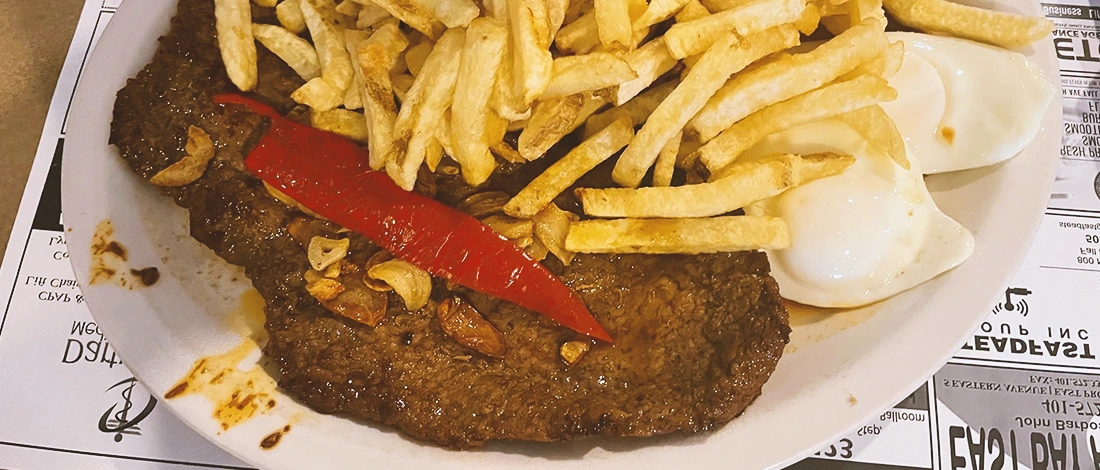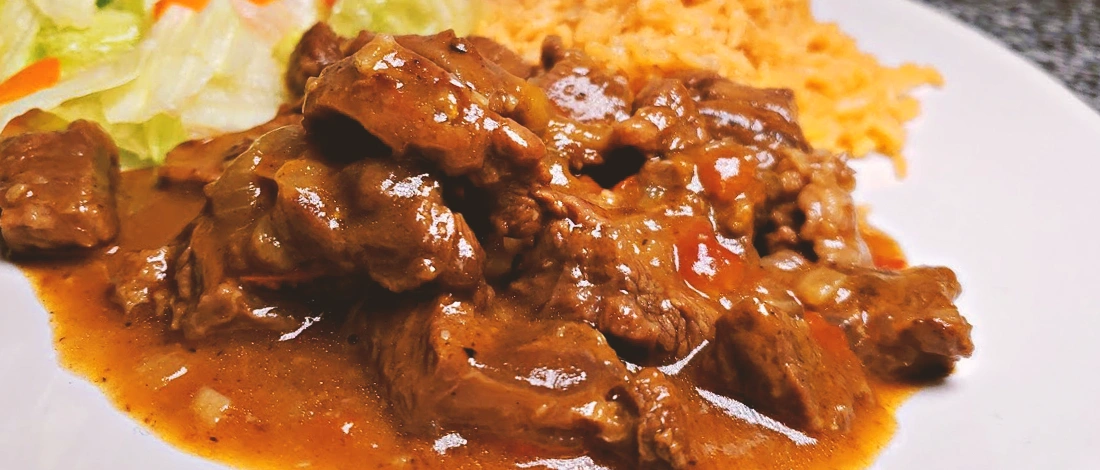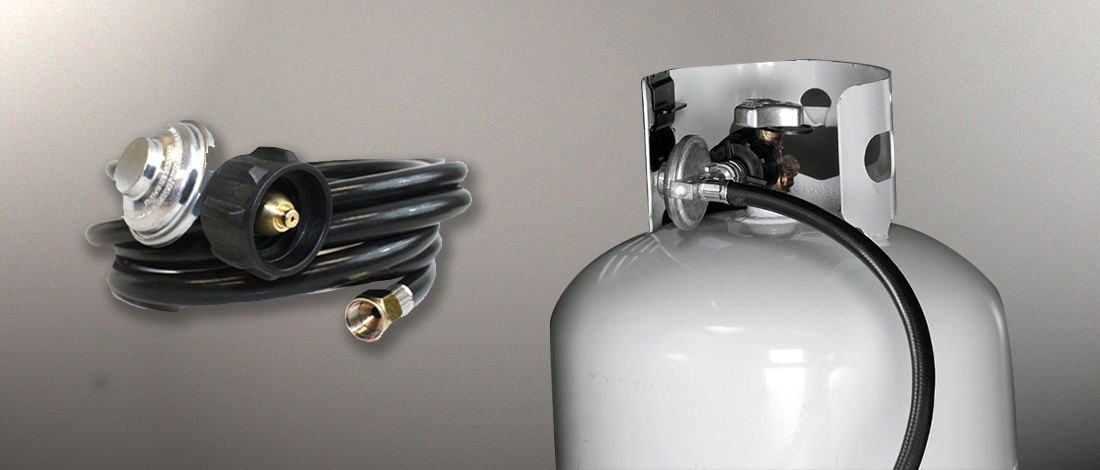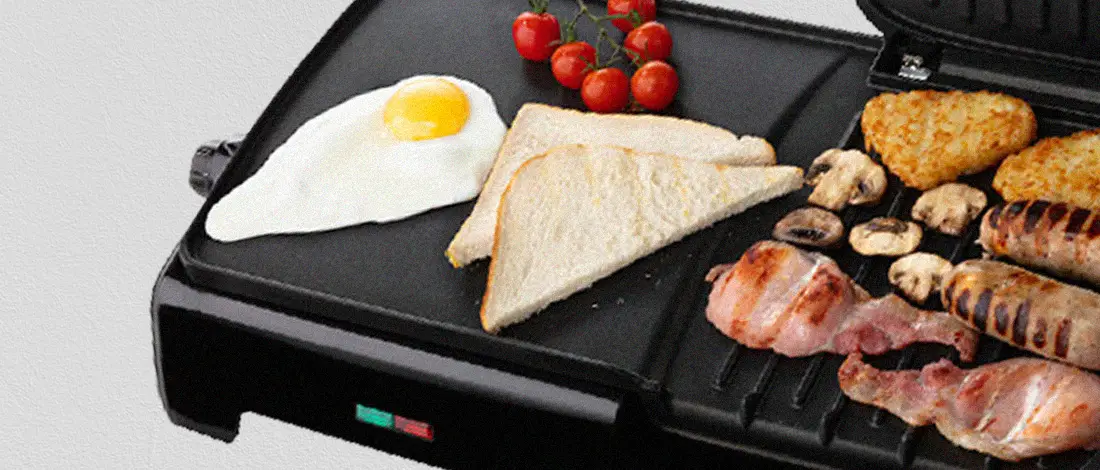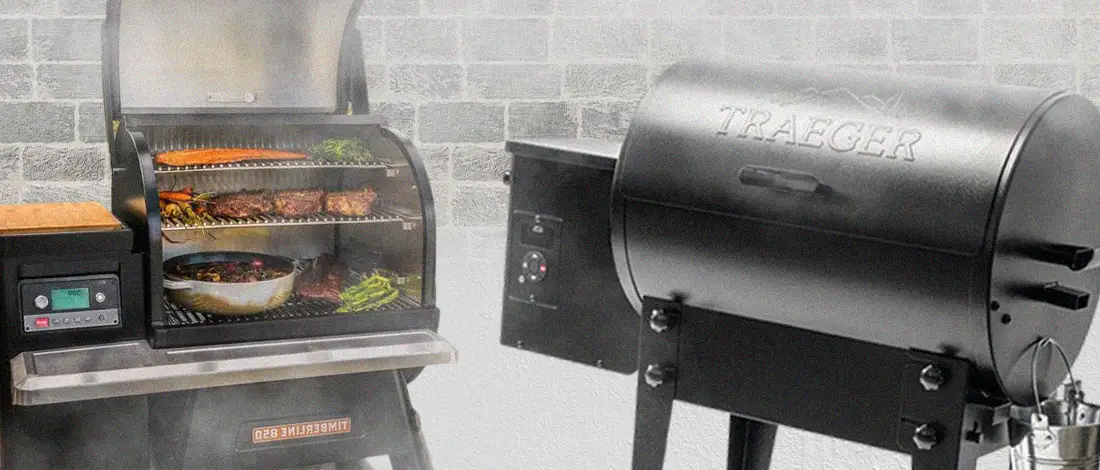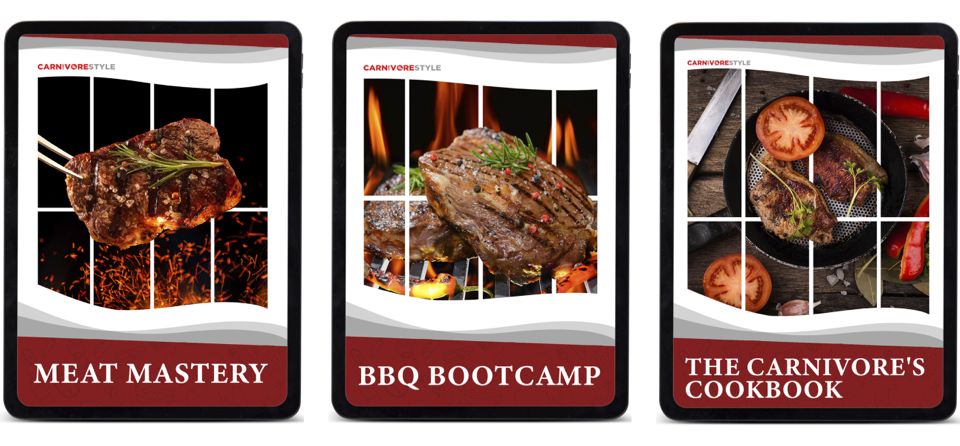As an avid griller and smoking enthusiast, I have spent countless hours experimenting with different types of wood chips, smoker boxes, and cooking methods to smoke meat on my gas grill.
Smoking brisket or ribs on a propane grill can be a challenge, but with years of experience under my belt, I will share my knowledge and expertise with you so you can cook with confidence.
Quick Summary
- Smoking on a gas grill is a great way to add smoky flavor without investing in a dedicated smoker or charcoal grill.
- Creating a two-zone gas grill setup is essential for smoking, allowing for indirect heat and even cooking.
- Smoke can be generated on a gas grill using a smoker box, pellet tube, aluminum foil pouch, or by placing wood chips directly on the burner.
- If you're looking for a new gas grill, check out our list of the best grills for expert recommendations and buying tips.
Step-by-Step Instructions for Smoking with a Gas Grill

Here are the steps I recommend for low and slow cooking with a gas grill.
1. Create a Two-Zone Gas Grill
Creating a two-zone gas grill for smoking meat is an excellent way to bring out the best flavors in your smoked dishes.
Available on grills with multiple burners, two-zone grilling allows you to maintain precise temperatures, helping you cook food evenly and safely without any hot spots or flare-ups.
When setting up a two-zone grill, the first step is to create separate heat zones by adjusting the burners on either side of your grill.
For example, in a typical system with three burners, one burner will be set at a high temperature, and the additional burners will remain shut off or set at a low temperature.
This creates two distinct heat zones: direct heat (high) and indirect heat (low).
The hot zone in your two-zone setup typically contains the wood chips or pellets used for creating the smoke for additional flavoring.
The cool zone on the opposite side of the grill is where your meat cooks slowly over several hours until it's perfectly done and packed full of flavor from the smoke and natural juices inside the meat.
2. Control the Grill Temperature
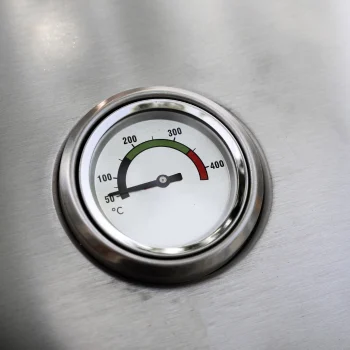
Temperature control keeps you from burning your food or undercooking it.
To maintain the correct temperature of your grill, there are some tools you should use:
Water Pan
Fill a disposable aluminum pan with water and place it on the indirect heat side of the grill.
The water pan acts as a heat sink and helps regulate the temperature, preventing fluctuations.
If the temperature gets too high in the gas smoker, the water will begin to boil and evaporate, absorbing some of the heat in the process.
Thermometer
A thermometer is essential for monitoring your gas grill's temperature.
Use a thermometer that has both a probe and readout, so you can easily determine the temperature without lifting the lid and losing all your heat.
Your grill likely has a built-in dome thermometer, but these are notoriously inaccurate.
Invest in a digital thermometer and place it in the same part of the grill where the meat is cooking for the best results.
Related Articles:
3. Generate Smoke for the Gas Grill
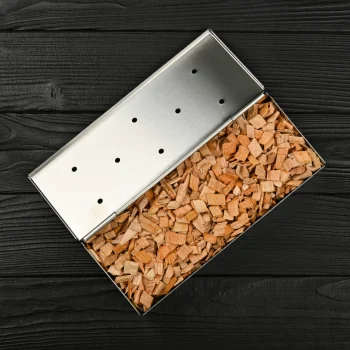
You need to generate smoke on your gas grill to achieve that traditional flavor.
Since most gas grills do not have a stainless steel or cast iron dedicated smoker box, here are several methods you can use:
- Smoker Box: A smoker box is a stainless steel container that holds wood chips. It is designed to sit on top of the burners and produce smoke. The stainless steel smoker box can withstand high heat and evenly distribute smoke throughout the grill. Simply fill the box with wood chips, close the top with its open holes, and place it directly on the grill grate above its own burner.
- Pellet Tube: A pellet tube is a metal tube, perforated with many holes, that you fill with wood pellets. Light one end of the tube and let it burn for a few minutes until it starts producing smoke. Then, place the tube on the grill grate in the direct heat zone. Because the tube’s flame and smoke are self-sustaining, it is very useful for cold smoking.
- Aluminum Foil Pouch: Create a smoke packet by placing a handful of wood chips on a sheet of heavy-duty aluminum foil. Fold the foil to seal the chips inside, and poke holes in the top of the foil with a knife or fork. Place the pouch directly on the lit propane burner. You also can use a covered foil pan.
- Directly on the Heat Source: Another simple method is to place a handful of wood chunks directly on the heat source. These wood pieces will produce smoke as they heat up. However, be cautious as they can burn hot in the fire quickly, so keep an eye on them. Consider soaking the wood in water to reduce its likelihood of being set ablaze.
4. Put It All Together
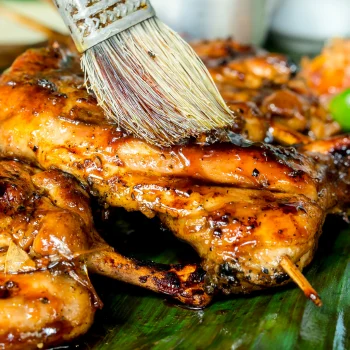
- Prepare the meat: Season your meat with your desired rubs or marinades. For meals like pork butt for pulled pork, consider applying a dry rub and letting it sit in the refrigerator for several hours or overnight to allow the flavors to penetrate the meat.
- Preheat the grill: Preheat your grill to the desired smoking temperature. This can vary depending on the recipe, but the USDA guideline for hot smoking recommends you aim for a temperature range between 225°F and 275°F [1]. On the other hand, cold smoking is usually done at temperatures below 85°F.
- Soaked wood chips: If you're soaking your wood chips, put them in water for about 30 minutes before you start smoking. Soaking helps slow down the burning process.
- Place the smoke source: Depending on the method you've chosen for generating smoke, place the smoker box, tube smoker, foil packet with holes, or dry wood chips on the lit burner or in the direct heat zone of the cooking chamber. The length of time a full load will last varies on the source.
- Add the meat: Once the grill has reached the desired temperature and smoke is starting to generate, place the meat on the grill grate in the indirect heat zone. Close the lid to trap the heat and smoke inside the cooking chamber.
- Maintain temperature: Monitor the grill temperature closely and adjust the burner settings as needed to maintain a consistent smoking temperature. You may need to change the gas flow or open vents to achieve the desired heat.
- Monitor smoke levels: Keep an eye on the smoke levels as you cook your ribs or other meat. You want a steady stream of thin, blue smoke. Avoid thick, billowing smoke, which can produce an acrid flavor. Adjust the smoke source if needed.
- Cook to the target temperature: Use an internal meat thermometer to monitor the temperature of the food. Different cuts of meat have different target temperatures, but most meat should be cooked to at least 145°F, according to the USDA [2].
- Baste and wrap (optional): You can baste the meat with barbecue sauce or other liquids during the smoking process. Additionally, for longer cooks or to achieve extra tenderness, you can wrap the meat in tin foil or butcher paper once it reaches the stall temperature.
- Rest and serve: Once the meat has reached the target temperature, remove it from the grill and let it rest for a few minutes to allow the juices to redistribute. Slice or pull the meat as desired and serve it with your favorite sides.
"Smoking on a gas grill is a great way to add flavor to your meat without investing in a separate smoker. Just remember to keep the lid closed and monitor the internal temperature of the meat."
- Guy Fieri, American Chef
Tips for Smoking on a Gas Grill

To enhance your smoking experience on a gas grill, consider the following tips:
- Use quality wood: Burn different types of wood chips, such as hickory, apple, mesquite, or cherry, to achieve various smoke flavors. Each wood imparts a unique taste to the meat.
- Keep a consistent temperature: Watch the grill’s temperature and adjust as necessary to maintain a steady temperature. Fluctuations in temperature can affect the cooking time and the quality of the smoked meat.
- Plan for longer cooking times: Smoking meat on a gas grill generally takes longer than traditional grilling. Be prepared for longer cooking times and plan accordingly. Patience is key to achieving tender, flavorful results.
- Experiment with different smoke methods: Try out other ways of generating smoke, such as using a smoke box, smoker tube, or foil pouch. Each process can produce slightly different smoke levels, allowing you to find your preferred technique.
- Be cautious with open flames: When using wood chips directly on the burner, be mindful of the potential for flare-ups. Keep a close eye on the chips to ensure they do not catch fire. Use a foil packet or stainless steel smoker box to contain the chips and prevent direct contact with the flames if necessary.
- Experiment with flavors: Enhance the smoke flavor by incorporating additional ingredients. For example, add herbs, spices, or fruit peels to the wood chips. This can infuse your meat with unique and aromatic flavors.
- Clean the grill regularly: It is a great idea to clean your gas grill and the grill grates to remove grease and residue. This promotes better heat distribution and prevents unpleasant flavors from the grill surface from transferring to your smoked meat.
- Practice food safety: Ensure that the meat reaches a safe internal temperature to prevent any risk of foodborne illnesses. Use a reliable meat thermometer to check for doneness, following the recommended temperatures for different types of meat.
FAQs
Do I Need to Soak Wood Chips for Gas Grill?
No, you don't need to soak wood chips for a gas grill, and soaking wood chips is a personal preference. Soaking them for 30 minutes before use can retard combustion and prolong the smoking time.
Do Gas Grills Give a Good Smoke Flavor?
Yes, gas grills can give a good smoke flavor with the right techniques and equipment. Using a smoker box or pellet tube and keeping the lid closed can help infuse the meat with more smoke flavor.
What Kind of Wood Do You Use for a Propane Smoker?
The kind of wood you use for a propane smoker depends on your preferred flavor profile and the type of meat you are smoking. Some popular kinds of woods include hickory, applewood, mesquite, cherry, and pecan.

References:
- https://www.fsis.usda.gov/food-safety/safe-food-handling-and-preparation/food-safety-basics/smoking-meat-and-poultry
- https://www.fsis.usda.gov/food-safety/safe-food-handling-and-preparation/food-safety-basics/safe-temperature-chart


